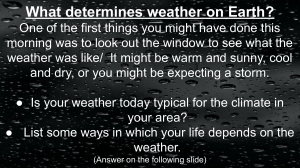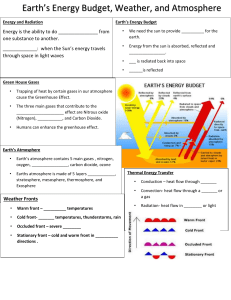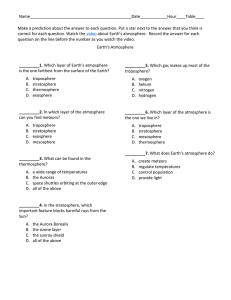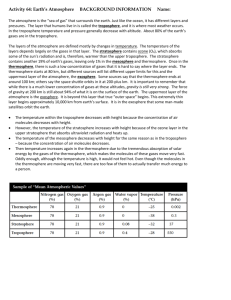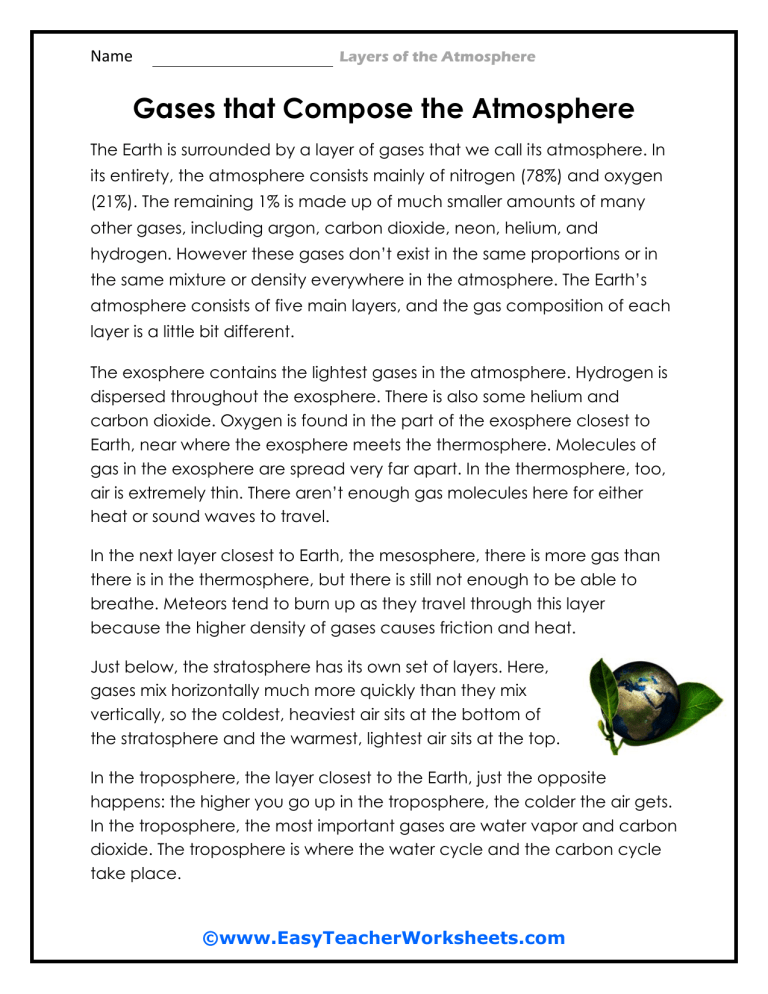
Layers of the Atmosphere Name Gases that Compose the Atmosphere The Earth is surrounded by a layer of gases that we call its atmosphere. In its entirety, the atmosphere consists mainly of nitrogen (78%) and oxygen (21%). The remaining 1% is made up of much smaller amounts of many other gases, including argon, carbon dioxide, neon, helium, and hydrogen. However these gases don’t exist in the same proportions or in the same mixture or density everywhere in the atmosphere. The Earth’s atmosphere consists of five main layers, and the gas composition of each layer is a little bit different. The exosphere contains the lightest gases in the atmosphere. Hydrogen is dispersed throughout the exosphere. There is also some helium and carbon dioxide. Oxygen is found in the part of the exosphere closest to Earth, near where the exosphere meets the thermosphere. Molecules of gas in the exosphere are spread very far apart. In the thermosphere, too, air is extremely thin. There aren’t enough gas molecules here for either heat or sound waves to travel. In the next layer closest to Earth, the mesosphere, there is more gas than there is in the thermosphere, but there is still not enough to be able to breathe. Meteors tend to burn up as they travel through this layer because the higher density of gases causes friction and heat. Just below, the stratosphere has its own set of layers. Here, gases mix horizontally much more quickly than they mix vertically, so the coldest, heaviest air sits at the bottom of the stratosphere and the warmest, lightest air sits at the top. In the troposphere, the layer closest to the Earth, just the opposite happens: the higher you go up in the troposphere, the colder the air gets. In the troposphere, the most important gases are water vapor and carbon dioxide. The troposphere is where the water cycle and the carbon cycle take place. ©www.EasyTeacherWorksheets.com
